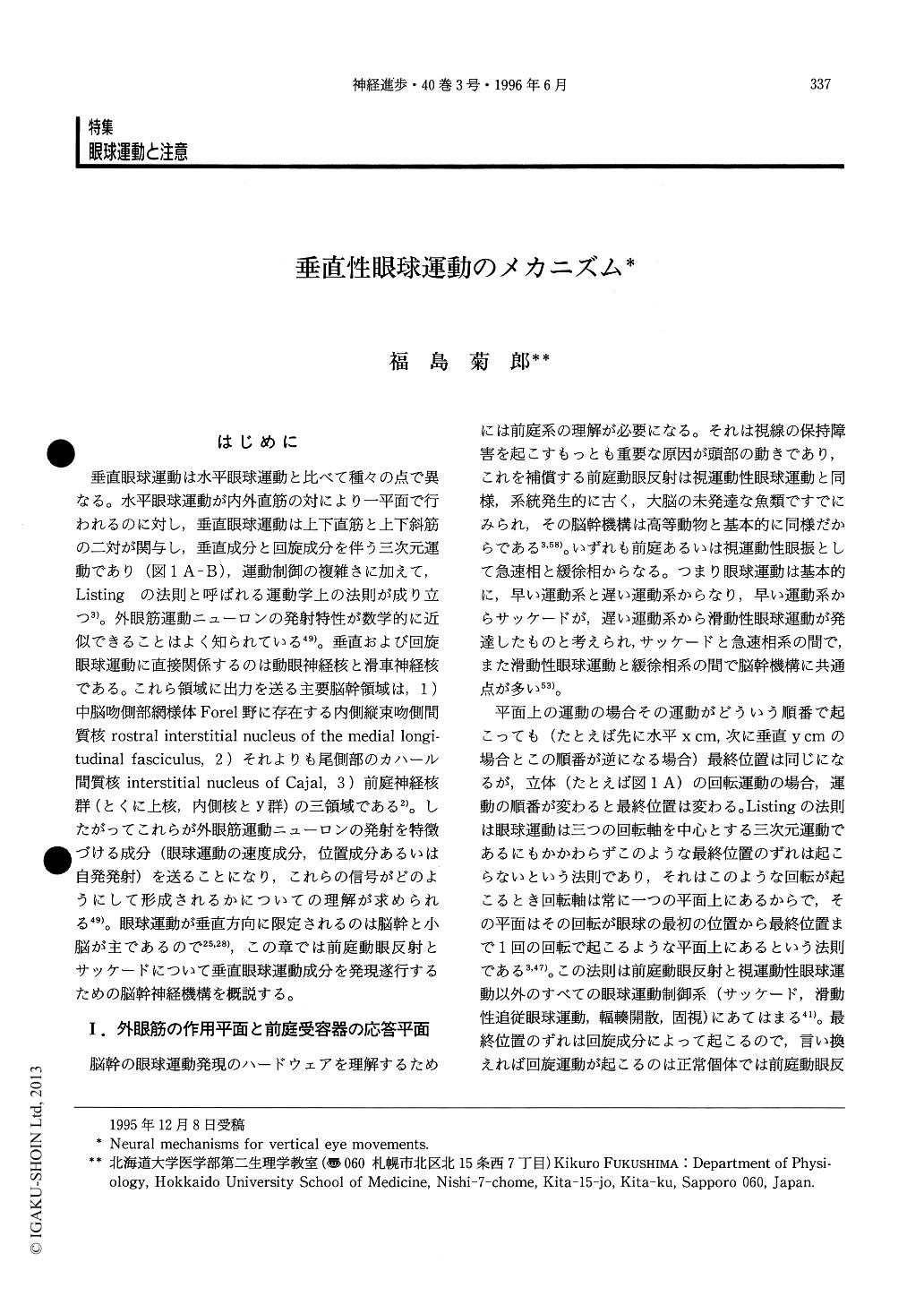Japanese
English
- 有料閲覧
- Abstract 文献概要
- 1ページ目 Look Inside
はじめに
垂直眼球運動は水平眼球運動と比べて種々の点で異なる。水平眼球運動が内外直筋の対により一平面で行われるのに対し,垂直眼球運動は上下直筋と上下斜筋の二対が関与し,垂直成分と回旋成分を伴う三次元運動であり(図1A-B),運動制御の複雑さに加えて,Listingの法則と呼ばれる運動学上の法則が成り立つ3)。外眼筋運動ニューロンの発射特性が数学的に近似できることはよく知られている49)。垂直および回旋眼球運動に直接関係するのは動眼神経核と滑車神経核である。これら領域に出力を送る主要脳幹領域は,1)中脳吻側部網様体Forel野に存在する内側縦束吻側間質核rostral interstitial nucleus of the medial longitudinal fasciculus,2)それよりも尾側部のカハール間質核interstitial nucleus of Cajal,3)前庭神経核群(とくに上核,内側核とy群)の三領域である2)。したがってこれらが外眼筋運動ニューロンの発射を特徴づける成分(眼球運動の速度成分,位置成分あるいは自発発射)を送ることになり,これらの信号がどのようにして形成されるかについての理解が求められる49)。眼球運動が垂直方向に限定されるのは脳幹と小脳が主であるので25,28),この章では前庭動眼反射とサッケードについて垂直眼球運動成分を発現遂行するための脳幹神経機構を概説する。
Vertical eye movements are produced by pairs of vertical recti and oblique muscles. The activity of these muscless produces 3-dimensional eye movements consisting of vertical and torsional components. In normal animals, the movements can be described, because of Listing's law, in a 2-dimensional coordinate during conjugate eye movements except for the vestibulo-ocular reflex (VOR) and optokinetic responses. This article reviews brainstem mechanisms for signal conversions in the vertical VOR and saccades.

Copyright © 1996, Igaku-Shoin Ltd. All rights reserved.


